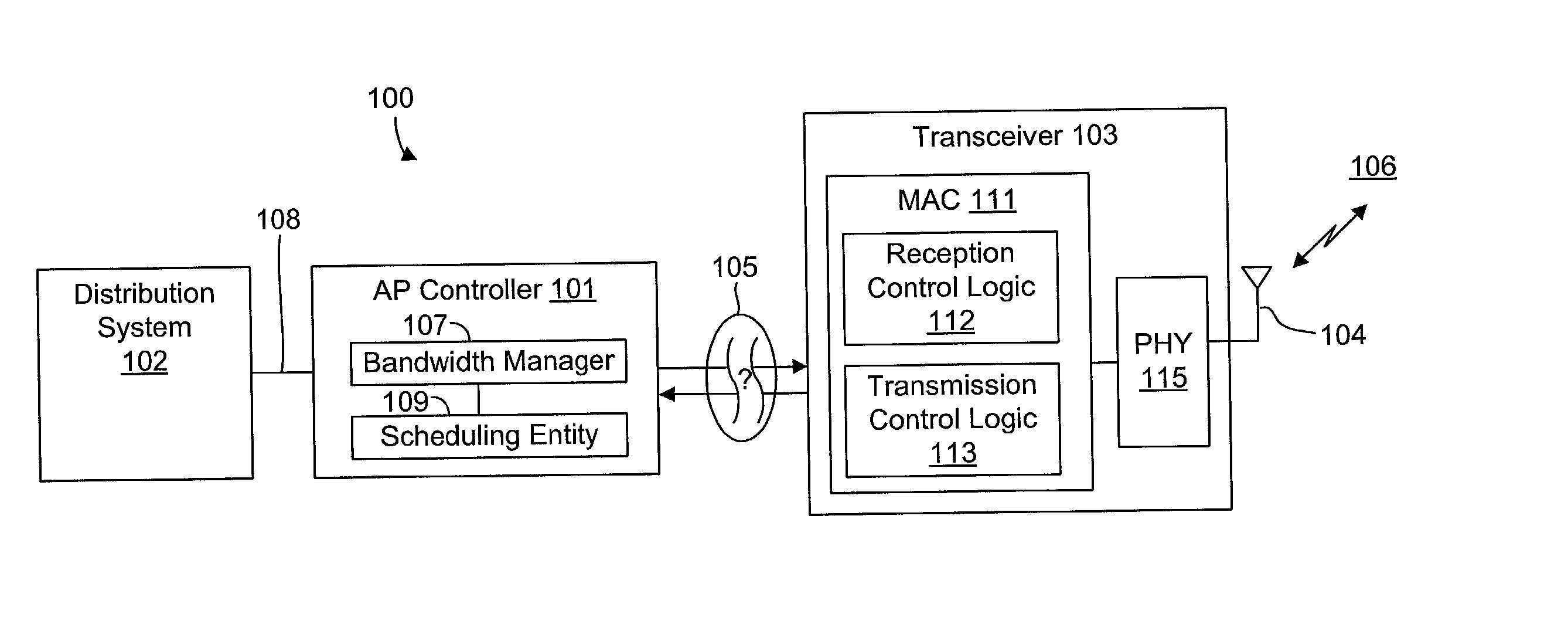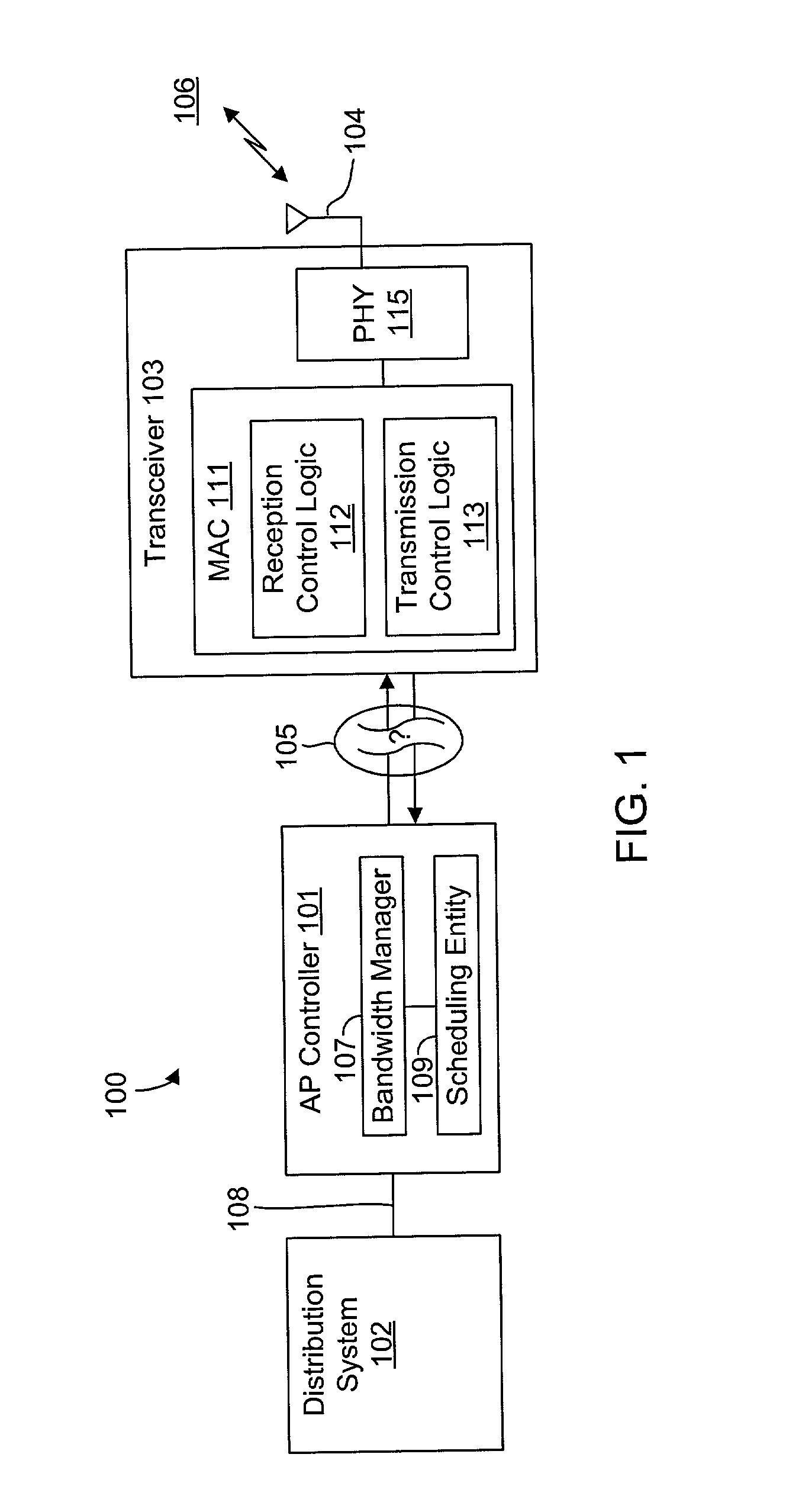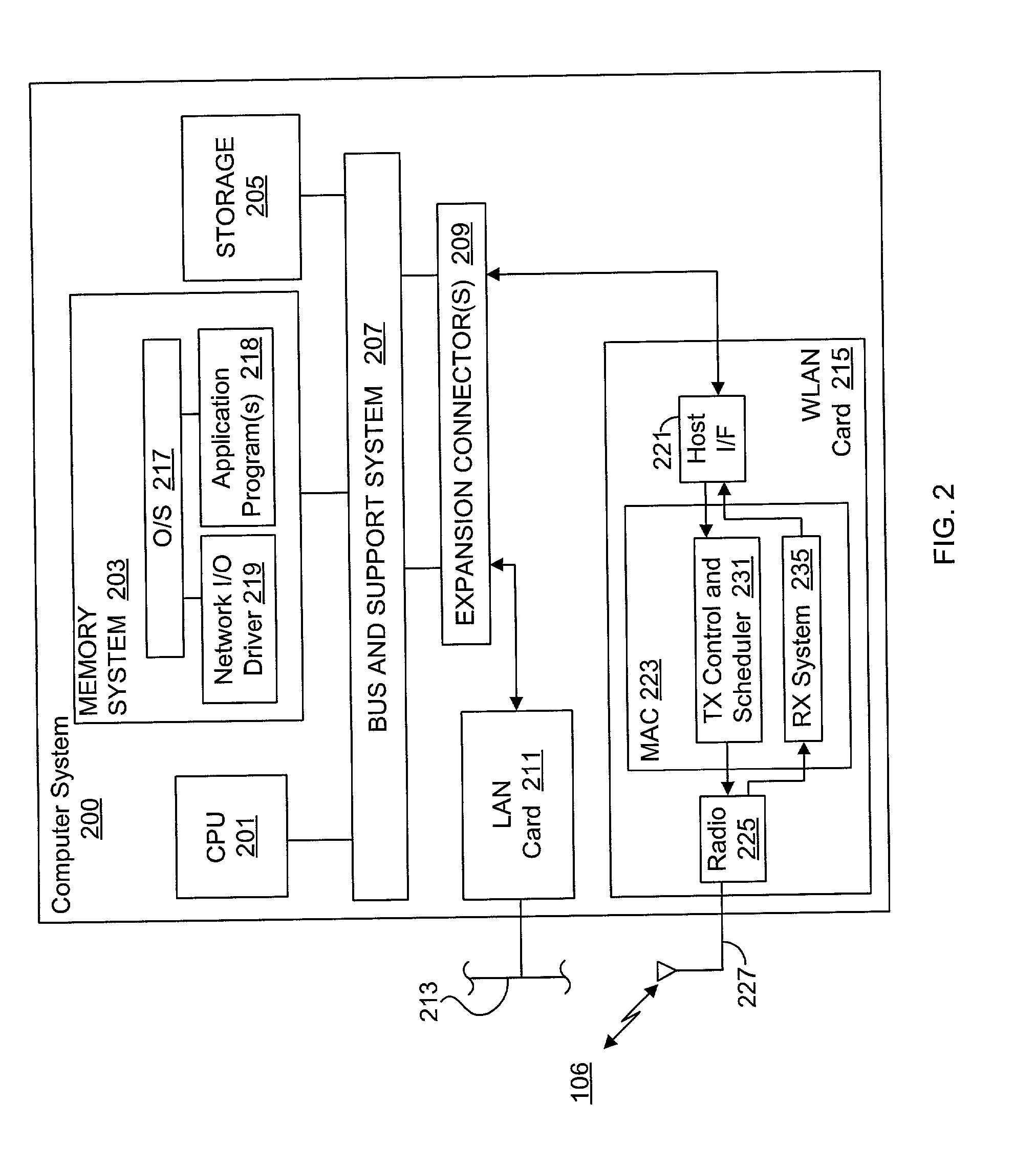Wired networks are well known and generally have acceptable performance, but have many limitations, such as various
cable management and convenience issues.
The typical environment for
wireless communications, however, is very noisy and not optimal for LAN communications.
For example, most homes and work places include many electronic devices that transmit or emit RF energy resulting in an electronically noisy environment that may interfere with WLAN communications.
For example, most indoor environments or rooms include multiple surfaces that are reflective to RF energy, creating multipath
noise.
Also, movement of items or devices or the like, such as hands, bodies, jewelry, mouse pointers, etc. or activation of electronic devices, such as cooling fans or the like, affects the overall
wireless communication path and potentially degrades
wireless communication performance.
Wireless communications are problematic for various other reasons.
In some environments, separate WLANs are proximally located which increases the likelihood for destructive interference between wireless devices that are not intended to communicate with each other.
Typical solutions of increasing transmit power (or "RF power" or "radiated power") or increasing
clock speed that are often available in wired devices with ready access to utility power or the like is not usually available for wireless devices.
It is not necessarily an option to decrease transmit power to reduce interference since this also reduces the communication area within a WLAN and reduces coverage faster than interference due to the square law.
Nonetheless, audio applications still have many timing constraints and requirements.
Audio information, for example, is very sensitive to
jitter and latency variation, which if not properly addressed may result in a breakdown of communications or dissatisfied users at much lower levels at which the audio cannot be understood at all.
This is particularly true for two-way communications, such as voice-over-IP and video conferencing where delay, latency and
jitter issues must be addressed and resolved, which is especially difficult for wireless communications.
Wired LANs, such as communications based on
Ethernet 802.3, for example, are success-oriented and have relatively
low delay and very low loss of data packets, whereas wireless communications are much less robust and have a substantially higher
data loss rate.
Wired communications are much more predictable, with somewhat deterministic delays, whereas wireless communications exhibit significantly greater and less predictable delays.
In wireless LANs, because of
network media which incur frame loss rates as high as 10.sup.-3, the retry and acknowledge functions have been incorporated into the MAC /
PHY functions, and thereby consume valuable bandwidth for wireless communications.
In contrast, for wireless transmissions, the
receiver consumes a variable amount of valuable time to detect and resolve a
signal being transmitted and to decode the information within the
signal.
The problems with WLAN communications are compounded when implemented on
personal computer (PC) platforms or the like commonly employed in home or small office environments.
The timing of data transfers, interrupts, and indications between the upper-layer protocol functions and the lower-layer MAC /
PHY transceiver functions, therefore, is variable and not known and subject to indeterminate delay and latency, so that the host
software and drivers are unable to closely control or accurately determine the timing of the
information transmission.
There is no guarantee that the scheduler will be able to respond fast enough to classify new arrivals, retrieve undelivered frames, make the required prioritization decisions, and load the first frame(s) for transmission during the CFP of the next
Superframe between the end of a full-length CFP and the end of the
Beacon that starts the next
Superframe.
Also, due to uncontrollable and unmeasurable (by the scheduler in real time) variations in host
interrupt latency, it is not possible to ensure that the first frame of the next
Superframe reaches the head of the relevant transmit queue in time even if the frame is submitted in response to a Superframe-timed interrupt, such as in response to a CF-End or a TBTT event.
Other than the sequencing problems described above, which can effect the synchronization between scheduler and MAC transmitter timing, the variable interface delay or latency hinders the scheduler's ability to perform properly various periodic functions and to monitor such periodic functions.
To compensate for the much greater probability of the loss of data frames on a wireless medium, the WLAN MAC protocol incurs significant overhead, including transmission of
acknowledgement frames and data frame retransmissions when not acknowledged.
This reduces the portion of the already limited
wireless bandwidth that is available for user data transfers.
Such bypassing of frames may occur, for example, if the transmitter is unable to transmit all of the queued frames intended for a selected interval or if the host system or variable delay interface is too slow in providing the frames, causing them to arrive after the end of the interval.
 Login to View More
Login to View More  Login to View More
Login to View More 


